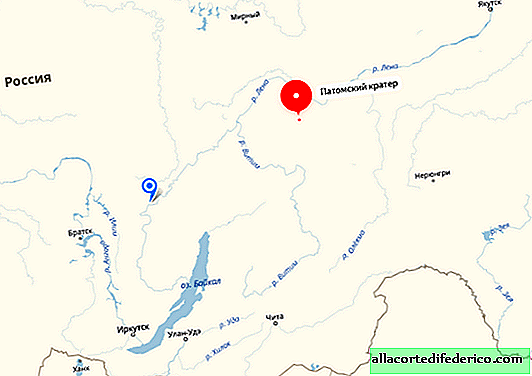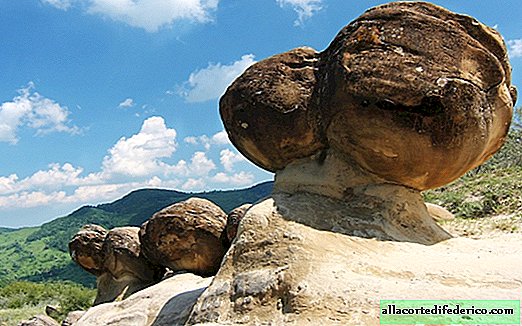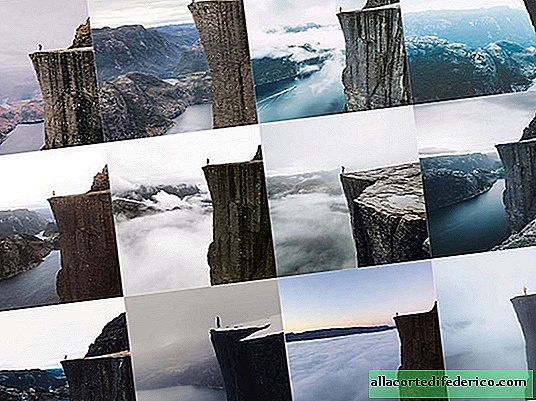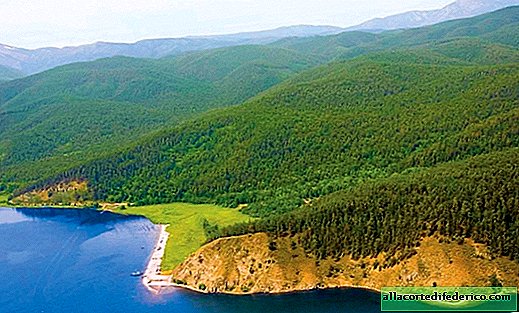The mystery of the Patom crater in Siberia: how a rocky hill 40 meters high was formed
In the middle of taiga Siberian forests stands a stony hill devoid of vegetation, which is clearly visible from a great distance. This is the mysterious Patom crater, which was discovered by geologists in 1949 and has long been considered to be the result of a meteorite fall. Later, for several reasons, this theory had to be abandoned, but scientists still have not come to a consensus on how it came about.

The Patom crater has a height of about 40 meters and a diameter of about 75 meters. In addition, in the center of the crater there is a small cone 12 meters high. The crater is located in the east of the Irkutsk region in the Bodaibo district, 200 meters from the Eksekulah River. This is an inaccessible and underdeveloped region of the region, the entire population of which, including residents of the city of Bodaibo, does not exceed 20 thousand people. Partly for this reason, the Patom crater has remained virtually unexplored for so long. Since the expedition of geologist V.V. Kolpakov discovered it in 1949, it has long been considered a meteorite crater and has not been examined in detail. In parallel with this version, another was also expressed. A number of researchers, according to descriptions of expedition members and from photographs obtained as a result of an aerial survey, suggested that the Patom crater is a cone of an extinct volcano.

But both of these theories were declared insolvent right after the first full-fledged expedition left for the place. In the vicinity of the crater, no traces of meteorite material or signs of a fall of a cosmic body were found. The volcanic hypothesis also did not find any evidence. In addition, after careful geological research, it was revealed that the whole area was quite calm in tectonic terms, so the reason for the appearance of such a strange object was worth looking for in something else.

At the beginning of the XXI century, several research expeditions were organized to the Patom crater. Scientists were able to find out that the age of the surrounding larches growing in the lower part of the cone and outside the embankment is about 480-500 years. At the same time, among the trees growing on the outer talus of the crater, specimens were discovered whose age is about 250-300 years. Thus, scientists came to the conclusion that the crater was formed about 500 years ago, but the active processes that led to the ejection of rocks continued for about 200-250 years.

After the research, the version of cryogenic origin came to the fore. That is, the appearance of a crater is most likely to be caused by permafrost. According to geologists, in this area there was an accumulation of groundwater, which as a result of prolonged accumulation and freezing turned into a huge block of ice. Due to a landslide, seasonal thawing, or other processes, the integrity of the ice lens was disturbed, and after a powerful hydraulic shock, a rock discharge occurred. Similar formations, although on a slightly smaller scale, can be observed in other regions of permafrost distribution. But scientists are confused by the fact that they are usually located in regions with a flat landscape, while the Patom crater is located on a slope.

The final and fully proven theory of the origin of the Patom crater does not currently exist. Scientists have to conduct additional research before they can possibly reveal the secret of its origin.

















